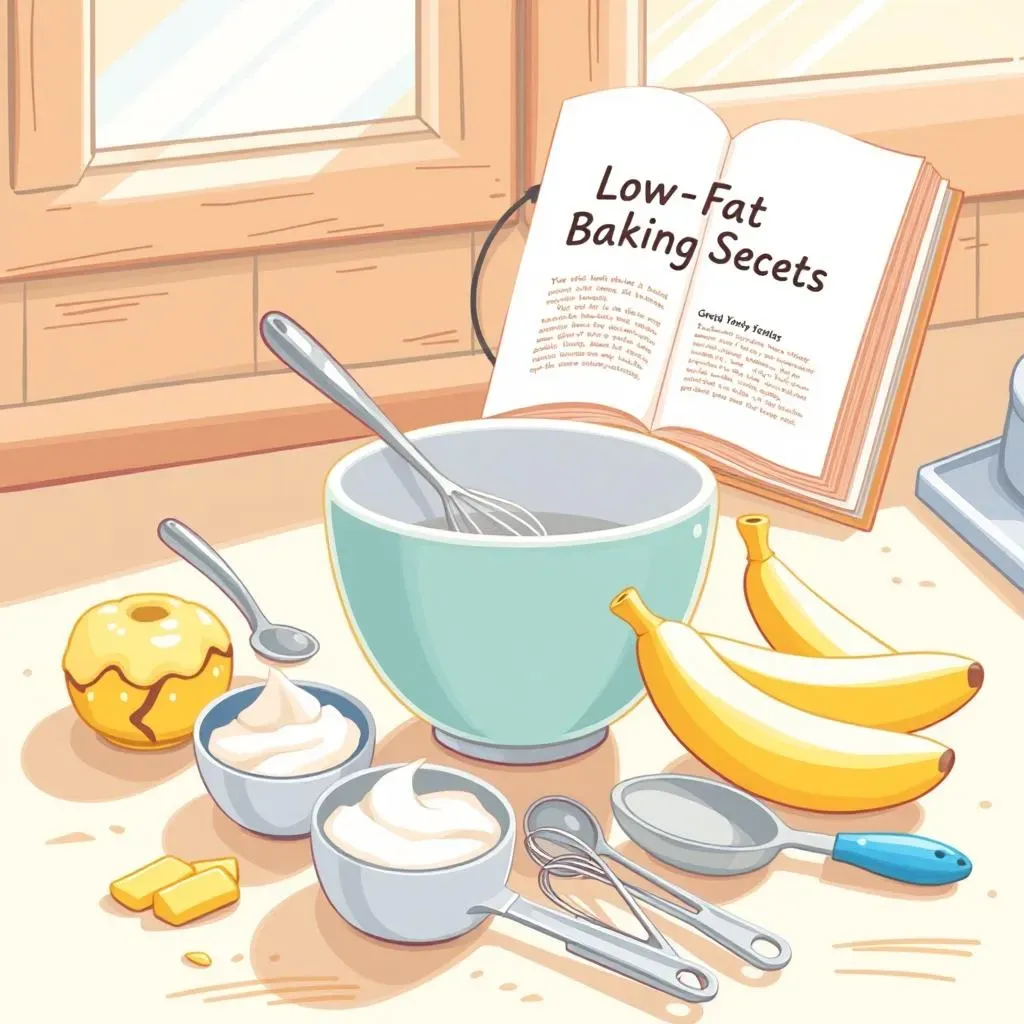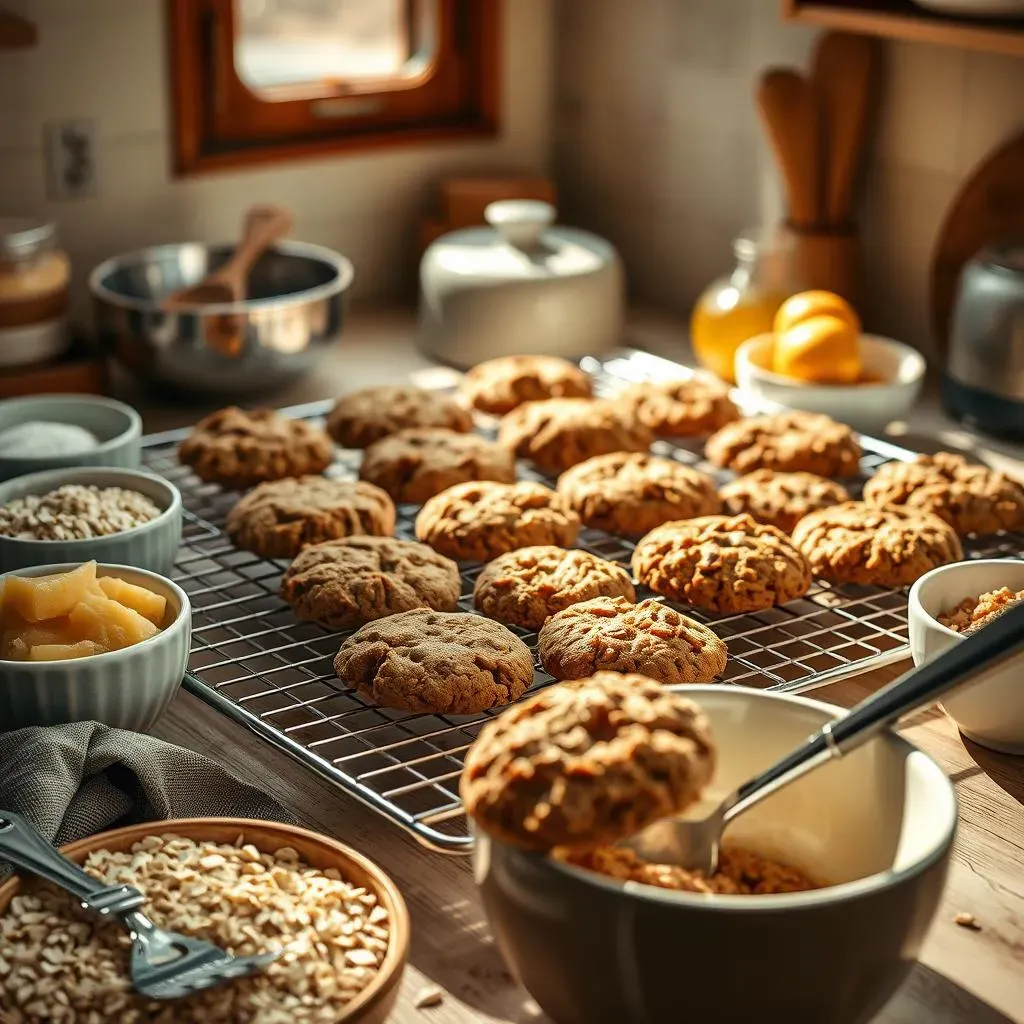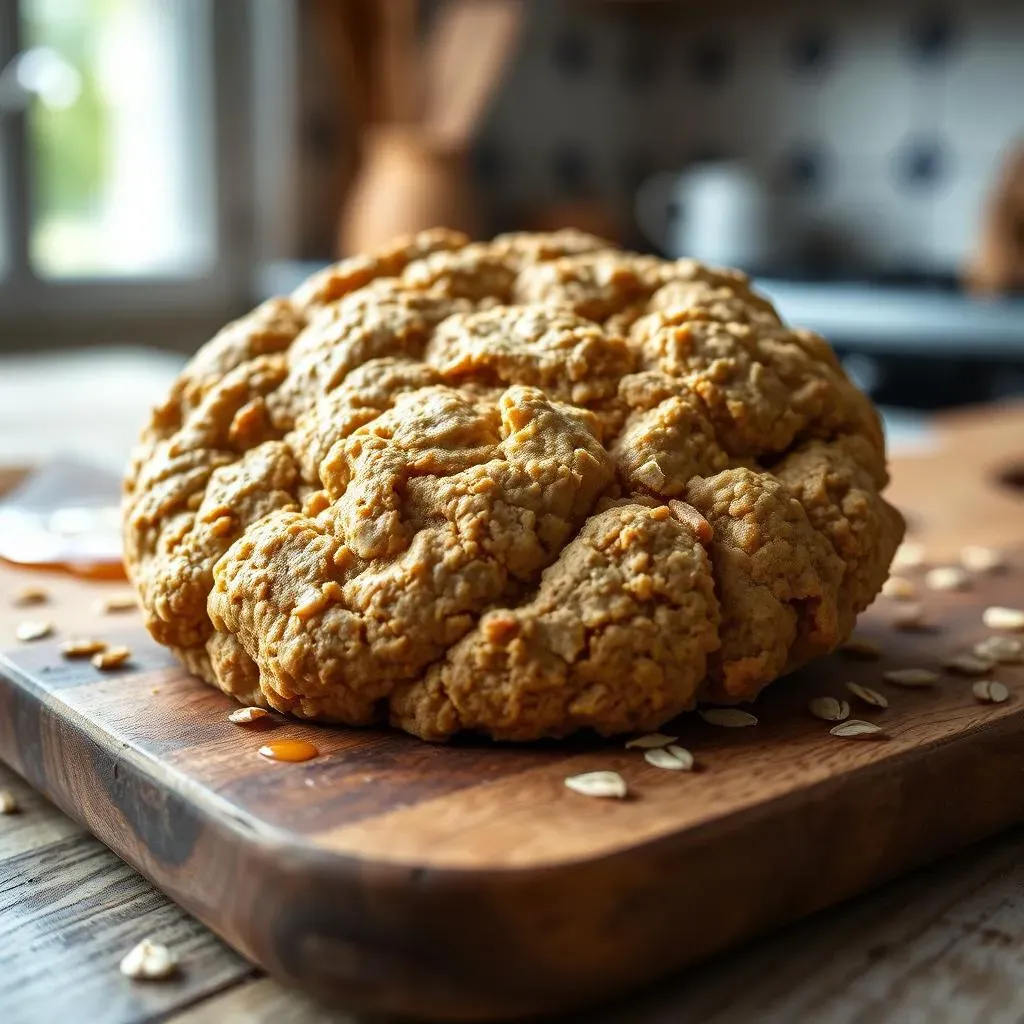Table of Contents
Ever dream of a cookie that's both a treat and a bit good for you? I get it. I've always loved oatmeal cookies, but the ones loaded with butter and sugar? Not so much. That's why I went on a mission to create the perfect low fat chewy oatmeal cookies. Think soft, satisfying, and packed with flavor, without the heavy feeling afterwards. This isn't about depriving yourself; it's about smart swaps and techniques. This article is your guide to achieving that perfect chewy texture we all crave, even when cutting back on fat. We'll explore the secrets to low-fat baking, focus on the methods for achieving that coveted chewiness, and then dive into a step-by-step recipe that will have you baking amazing low fat chewy oatmeal cookies in no time. Get ready to enjoy cookies you can feel good about!
Understanding the Basics of LowFat Baking

Understanding the Basics of LowFat Baking
The Fat Factor: Why It Matters
Okay, so "low-fat" baking might sound like a code word for "dry and sad," but it doesn't have to be! The first thing to understand is that fat plays a big role in baking. It's not just about calories; it's about texture and flavor. Think about butter in a normal cookie, it gives that richness and moistness. When we cut back on fat, we need to find smart ways to make up for what we're losing. It's like a puzzle, and we need to find the right pieces to make it work.
We're not trying to bake cardboard here, we are going for that chewy, satisfying bite. So, understanding how fat works is our first step. It's the difference between a crumbly mess and a delightful treat.
Smart Swaps: Replacing Fat Without Losing Flavor
Now, let’s talk about the fun part: substitutions. Instead of just yanking out the fat and hoping for the best, we use other ingredients that bring moisture and flavor. Applesauce is a hero here, it adds moisture and a touch of sweetness, which is great for things like cookies. Mashed bananas can do something similar, bringing a natural sweetness and a soft texture. And don’t forget about Greek yogurt, it adds a bit of tang and keeps the dough moist. It's all about working smarter, not harder. These swaps not only reduce fat but also can add extra nutrients, which is a nice little bonus.
It's like a magic trick, we're making cookies healthier without sacrificing that delicious taste we're after. This is not a battle against fat, but a smart approach to baking.
Ingredient | Why It Works | How to Use It |
|---|---|---|
Applesauce | Adds moisture and sweetness | Replace half the fat with applesauce |
Mashed Banana | Adds moisture, sweetness, and a soft texture | Replace some of the fat with mashed banana |
Greek Yogurt | Adds moisture and a bit of tang | Replace some of the fat with greek yogurt |
The Importance of Technique
It’s not all about what you put in, but how you put it together. When it comes to low-fat baking, the process matters more than ever. For example, the order in which you mix your ingredients can affect the final texture. Overmixing can lead to tough cookies, while under-mixing might leave some dry spots. It's like following a dance, you need the right steps to get the right rhythm.
Also, chilling the dough is non-negotiable. It helps the fats solidify, which means the cookies won't spread too much while baking. Low-fat doughs, in particular, can be a bit more prone to spreading, so chilling is your best friend. Think of it as a little rest period before the big bake. And lastly, don't overbake! Slightly soft centers are key to that chewy cookie experience.
“The secret of getting ahead is getting started.” – Mark Twain
Crafting the Perfect Chewy Texture in LowFat Oatmeal Cookies

Crafting the Perfect Chewy Texture in LowFat Oatmeal Cookies
Okay, so we've got the low-fat thing down, but what about that chewy texture? This is where the magic really happens. Achieving that perfect chewiness in a low-fat cookie is all about controlling moisture and gluten development. It's like trying to find the right balance in a seesaw, where you need enough moisture to keep the cookies soft, but not so much that they become cakey. Think of it as a delicate dance between wet and dry ingredients, and the way you mix them.
One of the key things I've learned is that the type of oats you use matters. Quick oats tend to blend in more and create a softer texture, while old-fashioned oats provide a chewier bite. It's like choosing the right fabric for a dress, it changes the whole feel of the final product. Also, don't underestimate the power of brown sugar! It adds moisture and a molasses-like flavor that enhances the chewiness. It’s the secret weapon for many chewy cookie recipes, and it works wonders here too.
Ingredient | Impact on Chewiness |
|---|---|
Quick Oats | Softer texture |
Old-Fashioned Oats | Chewier texture |
Brown Sugar | Adds moisture and molasses flavor |
Another trick is to slightly underbake the cookies. This might sound scary but trust me, it's key. When you take them out of the oven while they’re still a little soft in the center, they’ll continue to set up as they cool, resulting in a perfectly chewy texture. It's like letting a good steak rest after cooking, it allows the juices to redistribute and become more flavorful and tender. Also, adding a touch of liquid, like a tablespoon of milk or even a bit of extra applesauce, can help keep things moist. It's all about finding that sweet spot where the cookies are soft, but not gooey.
And don’t forget, chilling the dough is your best friend. It helps prevent the cookies from spreading too much and keeps them from becoming flat and crispy. It’s like giving the dough a little vacation before the big bake, allowing the flavors to meld and the fats to solidify. “The best way to predict the future is to create it.” – Peter Drucker
Low Fat Chewy Oatmeal Cookies: A StepbyStep Recipe

Low Fat Chewy Oatmeal Cookies: A StepbyStep Recipe
Gather Your Ingredients
Alright, let's get to the good stuff, actually making these low-fat chewy oatmeal cookies! First, you’ll need to round up your ingredients. Think of it like preparing for a mini-adventure in your kitchen. You'll need 1 1/2 cups of rolled oats (I prefer a mix of quick and old-fashioned for that perfect texture), 1 cup of whole wheat flour (or gluten-free blend), 1/2 cup of unsweetened applesauce, 1/4 cup of brown sugar, 1/4 cup of honey or agave, 1 large egg, 1 teaspoon of vanilla extract, 1 teaspoon of baking soda, 1/2 teaspoon of cinnamon, a pinch of salt, and 1/2 cup of raisins.
Make sure everything is measured correctly, especially the oats and flour. Too much of either can mess with the texture. Think of it like a science experiment, precision is key! I always like to get everything laid out before I start, it makes the whole process feel much smoother.
Mixing the Dough
Now, for the fun part: mixing! In a large bowl, combine the applesauce, brown sugar, honey (or agave), egg, and vanilla extract. Whisk these wet ingredients together until they are well combined. In a separate bowl, mix the dry ingredients: flour, baking soda, cinnamon, and salt. Slowly add the dry ingredients to the wet ingredients, mixing until just combined. Be careful not to overmix; it’s like when you’re trying to paint a wall, you don’t want to over-brush the same spot. Gently fold in the oats and raisins. The dough should be soft and a bit sticky. It’s important to get everything mixed evenly to ensure each cookie has the same flavor and texture. Now, this is where patience comes in handy, and trust me, it pays off!
Remember how I mentioned the importance of chilling? Well, now’s the time. Cover the bowl with plastic wrap and pop it into the fridge for at least 30 minutes. This is not a suggestion; it’s a must. Chilling helps prevent the cookies from spreading too thin and ensures they get that perfect chewy texture. It’s like giving the dough a little spa day before it gets baked.
Ingredient | Amount |
|---|---|
Rolled Oats | 1 1/2 cups |
Whole Wheat Flour | 1 cup |
Unsweetened Applesauce | 1/2 cup |
Brown Sugar | 1/4 cup |
Honey or Agave | 1/4 cup |
Egg | 1 large |
Vanilla Extract | 1 tsp |
Baking Soda | 1 tsp |
Cinnamon | 1/2 tsp |
Salt | Pinch |
Raisins | 1/2 cup |
Baking to Perfection
Alright, the dough is chilled, and the oven is preheated to 350°F (175°C). Let's get these cookies baked! Line a baking sheet with parchment paper. This helps prevent sticking and makes cleanup a breeze. Scoop rounded tablespoons of dough onto the baking sheet, leaving a little space between each cookie. They’ll spread a bit, but not too much if you chilled the dough properly. Now, pop them into the oven for about 10-12 minutes. Keep a close eye on them; they’re done when the edges are golden brown and the centers are still slightly soft. It’s like watching a sunset; you don’t want to miss the perfect moment.
Once they’re out, let them cool on the baking sheet for a few minutes before transferring them to a wire rack. This is crucial; if you move them too soon, they might fall apart. It's like letting a hot pan cool before you try to move it. And there you have it! Freshly baked, low-fat chewy oatmeal cookies. Now you can enjoy the fruits of your labor. “The only way to do great work is to love what you do.” – Steve Jobs
Wrapping Up Your Low-Fat Cookie Journey
So, there you have it – the path to achieving low fat chewy oatmeal cookies that are both delicious and better for you. From understanding the role of each ingredient to mastering the baking process, it’s all about balance and smart choices. You don't need loads of butter or sugar to create a truly satisfying treat. These cookies prove that healthy can be incredibly tasty, and I hope you’re as excited about baking them as I am. Now, go on, get baking, and enjoy every chewy, guilt-free bite!
